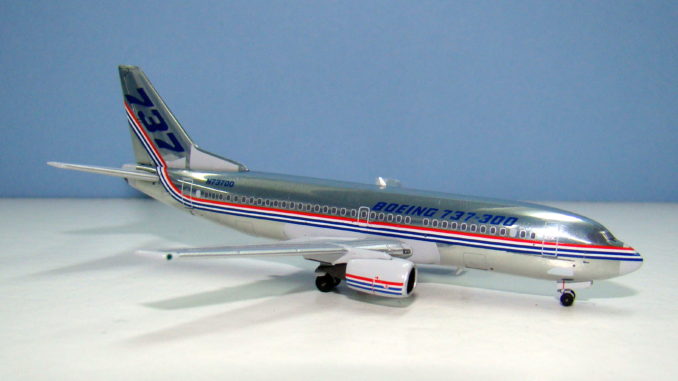
Prototypes and house colour schemes are an interesting collecting criteria, although until recently it was quite rare to see narrowbodies in house colours (the exception were Dragon Wings Airbuses but they are almost universally rubbish). It has been nice to see Panda Models breaking away from their Chinese audience to produce both A320s and now a 737-300 in house colours on their excellent moulds. In this review we look at the latter, which was only released in June 2017.
THE REAL THING
When Boeing created the series 300 version of the Boeing 737 I’m sure they didn’t think they were creating a ‘classic’ airliner. Indeed the aircraft was at the cutting edge of technology when the prototype N73700 took off for its first flight in February 24, 1984. It is only in hindsight that the 737-300/400/500 series have been labelled the 737 Classic, although the type has become more than a classic due to just its age. With 1,988 aircraft of the three variants delivered, up to December 17, 1999 when the last series 300 was delivered to Air New Zealand, the 737 took over from the 727-200 Advanced as the lynchpin of the Boeing production line.

The 737-300 as launched in March 1981 with joint orders from USAir and Southwest Airlines for 10 each of the new type. The 737-200 Advanced had been picking up sales throughout the late 1970s and early 80s but was showing its age. The larger 727 was being replaced by the new 757 but there was a significant capacity gap between the 737-200 and 757. Enlarging the 737 would eventually fill this gap, especially with the series 400.
The series 300 was stretched by 2.87 metres over the series 200 to enable up to 149 passengers in a single class layout, although around 126 in a two class configuration was more normal. Of course the most difficult aspect for Boeing was fitting a new high bypass turbofan under the wings. This was solved by placing the CFM56 engines ahead of, rather than, under the wings and producing the now familiar non-circular flat bottomed intake.
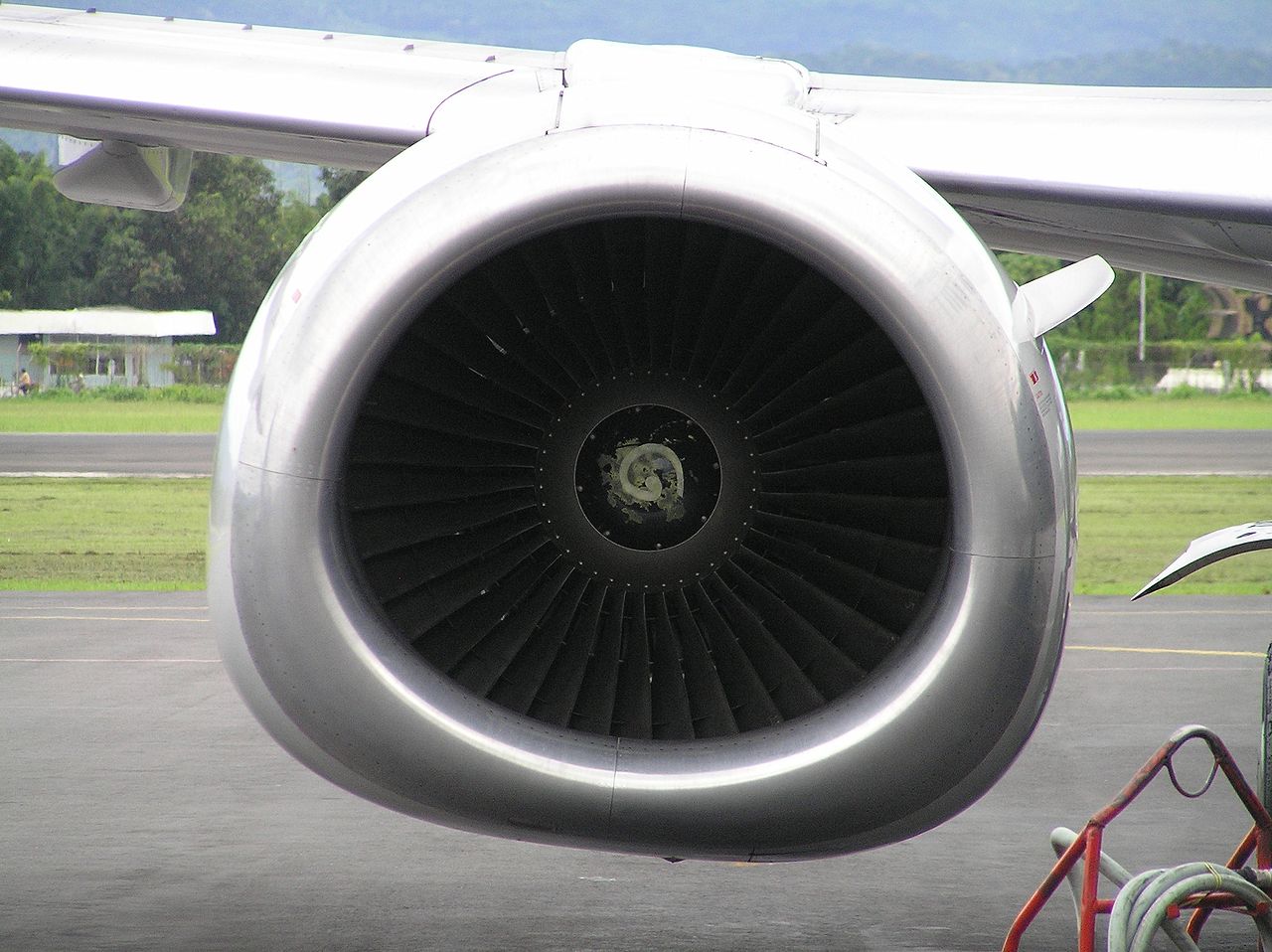
Boeing created a tradition with the 737-300 prototype by reusing the registration of the very first 737 (a series 130 that first flew in 1967). N73700 was subsequently reused for both the first 737-400 (first flown in March 1988) and first 737-500 (first flown in June 1989). By then the 737-3B7 N73700 had long joined launch customer USAir where she became N350AU on April 30, 1985. In 1988 she was reregistered N371US as USAir swallowed up the larger 737 operator Piedmont Airlines. She transferred into the US Airways livery in February 1997 and continued in service for a further eight years. She was by then owned by the bank JP Morgan who she was returned to in October 2005. Her ultimate fate was at the breakers at Marana in 2006.
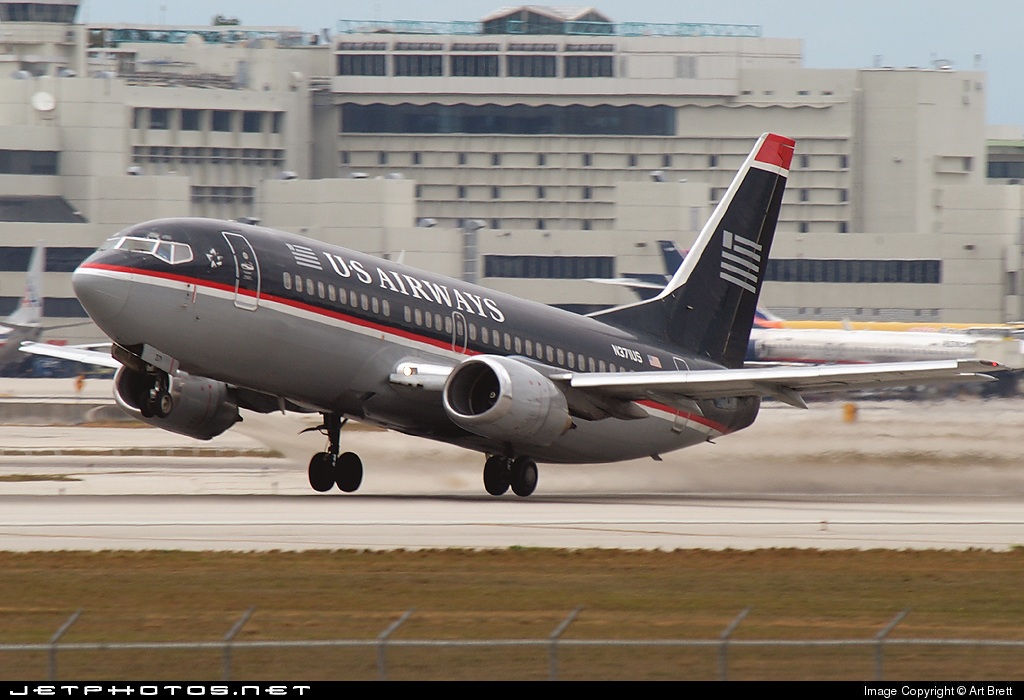
The 737-300 sold well and competed effectively against the McDonnell Douglas MD-80, with several airlines actually swapping to the Boeing jet (like AirCal and New York Air). It would eventually be the Airbus A320 series which would necessitate the creation of the 737 Classic’s replacement, the 737 Next Generation series. Even in 2017 there are still hundreds of 737-300s in service, many converted to freighters, although the type is quickly leaving service. Southwest still uses 67 737-300s but is scheduled to end operations with the type by 2018.
THE MODEL
The format for my reviews is to split them into three key areas:
- The mould of the aircraft
- The paint and livery
- Printing and quality control
Each can get a maximum score of 10 for a section giving a maximum combined total score of 30.
THE MOULD
This 737-300 mould first appeared in 2013 being used by Aeroclassics. It appears they were using it under licence from Kang Kai who subsequently have had a well documented falling out with Aeroclassics and have started making their own models using the Panda brand. Aeroclassics still have some castings left to use and produce the occasional 737-300 whilst Panda concentrate on mainly Chinese examples.
All other 737-300s are pretty ordinary. Some Dragon Wings releases are ok as are most earlier Gemini Jets but as of 2017 only this mould and the newer Phoenix / Gemini Jets series 300 are still in use. The latter is an awful mould with a silly long nose. Thankfully the Aeroclassics / Panda 737-300 is excellent.
The Panda 737-800 is good but has been criticized for the shape around the cockpit. This is not an issue with the series 300, which has an accurate nose and nicely curved cockpit line. The wings and engines are spot on as is the rear fuselage. Extra credit goes for showing the APU notch at the tailcone. Perhaps the connection of the tip of the vertical stabilizer to the fuselage isn’t quite pointy enough but it is a very minor criticism.
Recently Panda models have started adding aerials to all their moulds and this 737-300 comes with three (mid-roof, underside forward of the wing and underside behind the wing). Panda models aerials are always excellent and unlike JC Wings / Gemini aerials perfectly sized.
Of the 46 737-300s I own only 5 do not use this mould, which goes to show the high esteem I hold it in. Basically you’d be a fool to buy any other 737-300 in 1/400 scale if you have a choice of moulds.
SCORE – 10
PAINT & LIVERY
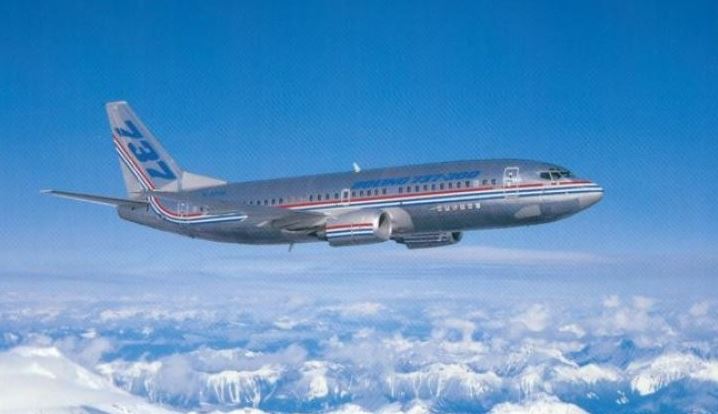
I’m actually surprised how difficult it is to find photographic images of the prototype 737-300 on the internet. I only found two and neither is very high quality. Boeing’s 1980s house colours scheme was an attractive and patriotic livery of thin blue white and red stripes on a natural metal fuselage. The stripes went up onto the tail forming the line for large 737 titles. At some point in the prototype’s history it had the launch customer logos applied but they are not visible in one of the two photos I have.
The model does not have the launch customer logos but otherwise the livery is applied perfectly. The stripes are in the correct places including being low on the engines. The font of all titling is also accurate, which is all the more impressive as the font of the 737 parts is quite unusual.
Above all being natural metal but also being an airliner with large areas of composites there are chunks of non-metal grey areas on the bare airframe. These appear very accurately applied to the model and include the nosecone, panels under the cockpit, aerials, the wingroot fairing, engine nacelles and parts of the tail.
SCORE – 10
PRINTING & QUALITY CONTROL
Printing detail and quality on Panda models is almost universally excellent and that is true of this model also. There are no issues with details like pitot tubes, blocked out windows, overwing exit markings and landing lights nicely printed on.
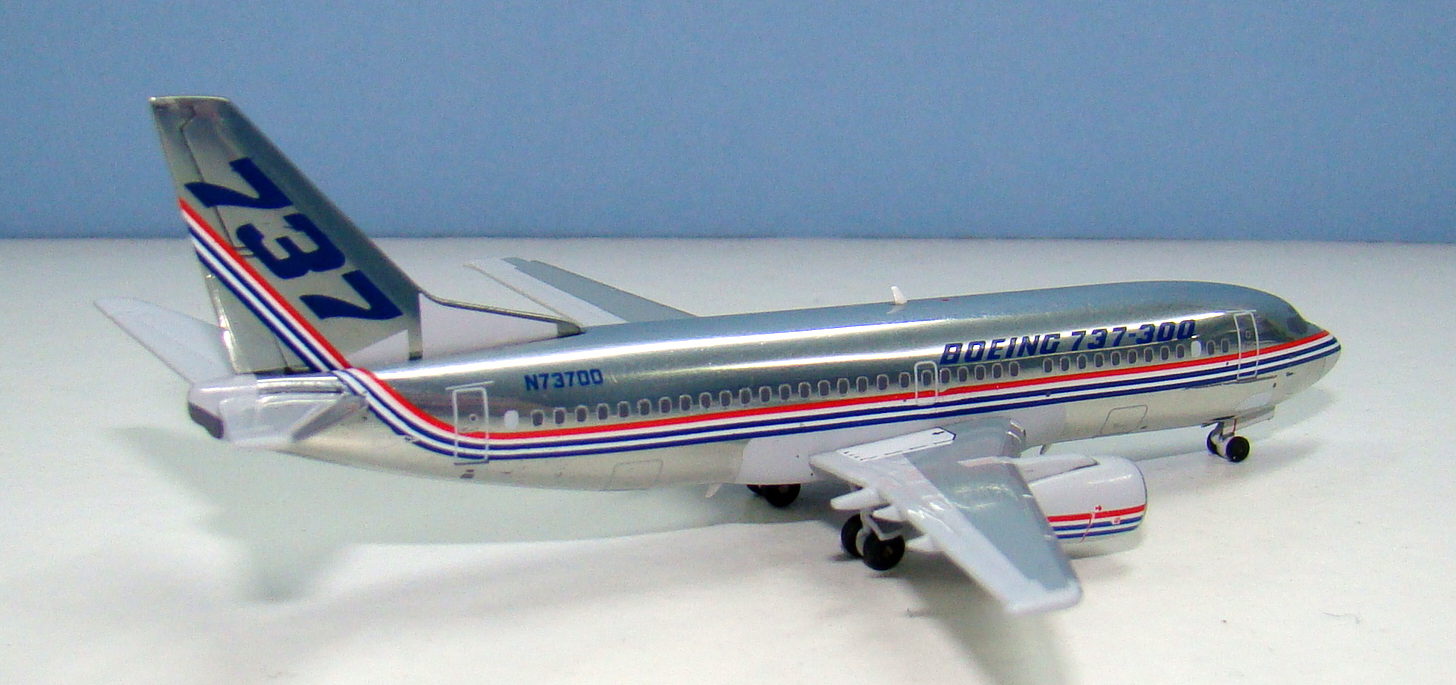
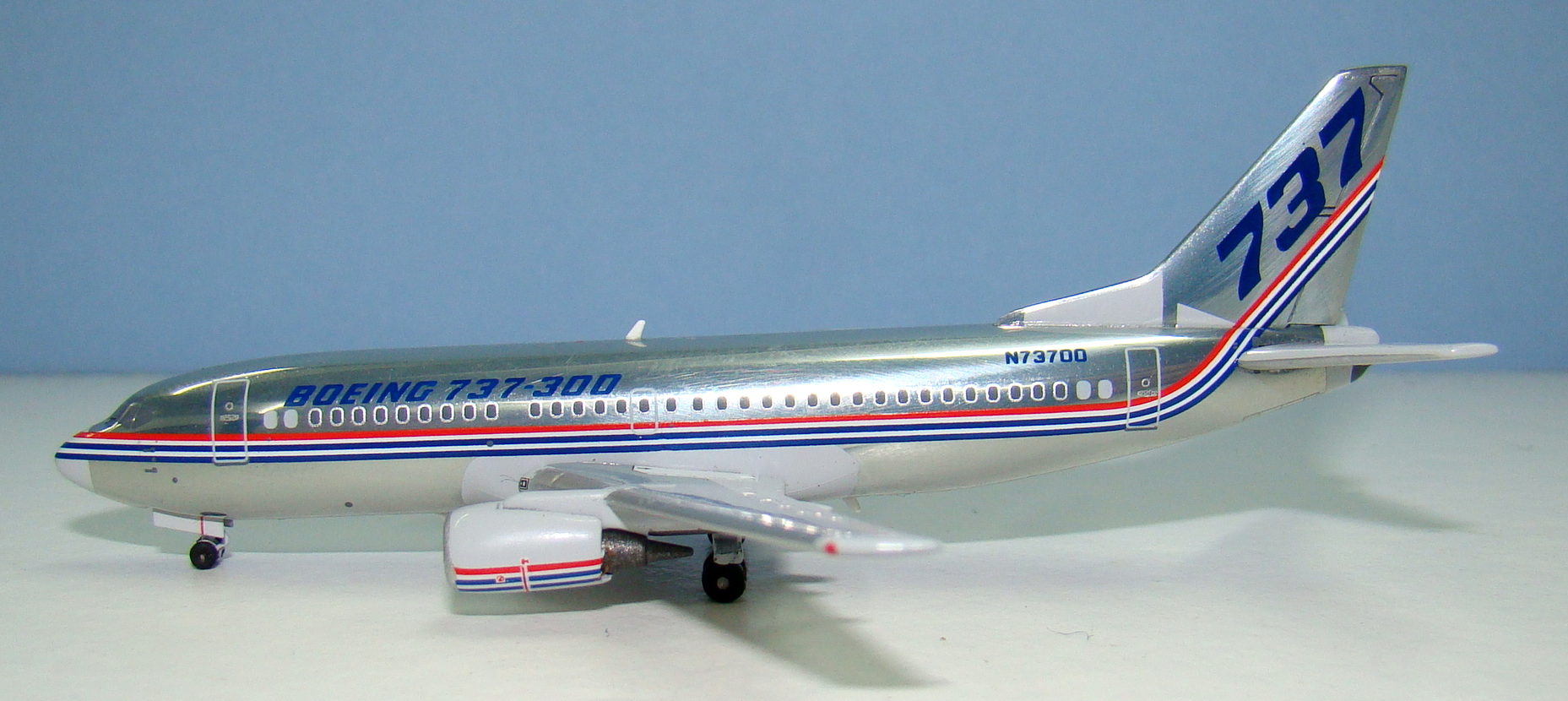
Construction of the model is also good, however here there is imperfection. The model has a slight but obvious nose down attitude, which is either caused by the maingear not being glued in as well as usual or the nosegear being fitted too deeply. I’m not sure whether it is one or both that are contributing to the issue, however few of my 737-300s using this mould exhibit this problem. Indeed two others I got in the same package (Shanghai Airlines and China Southern) do not have it. It is not just a Panda thing either as an Aeroclassics Shandong Airlines 737-300 also has the same thing. It’s not a major problem but it is noticeable.

SCORE – 8
CONCLUSION
This is a great little model of a historically important jet. I’m surprised that so many of these prototypes have been missing from 1/400 for so long. Certainly Panda seem to have their eye on models like this and it is good to see them spreading beyond just the China market. As a wider point Aeroclassics and Panda 737-300s are almost always excellent models, which are well worth adding to your collection.
FINAL SCORE – 28


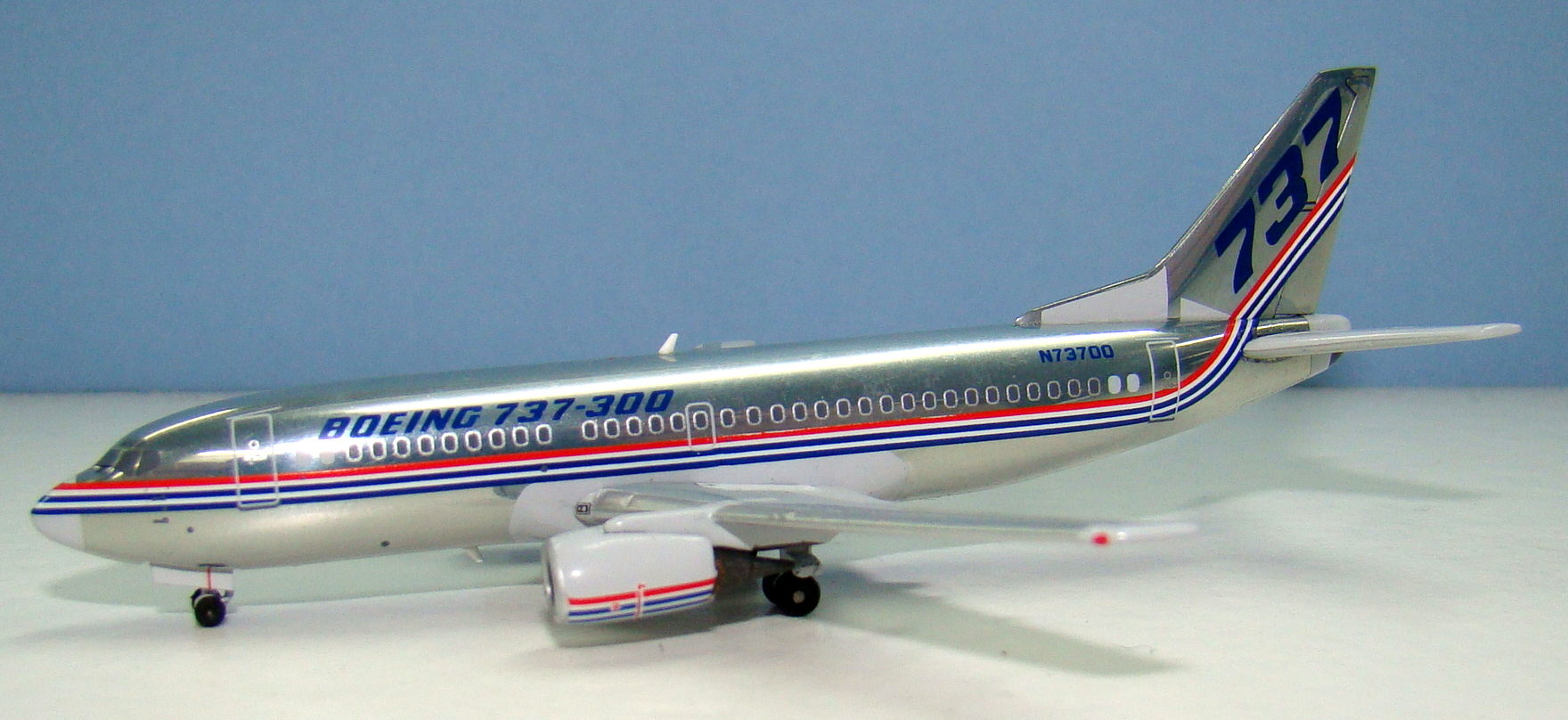
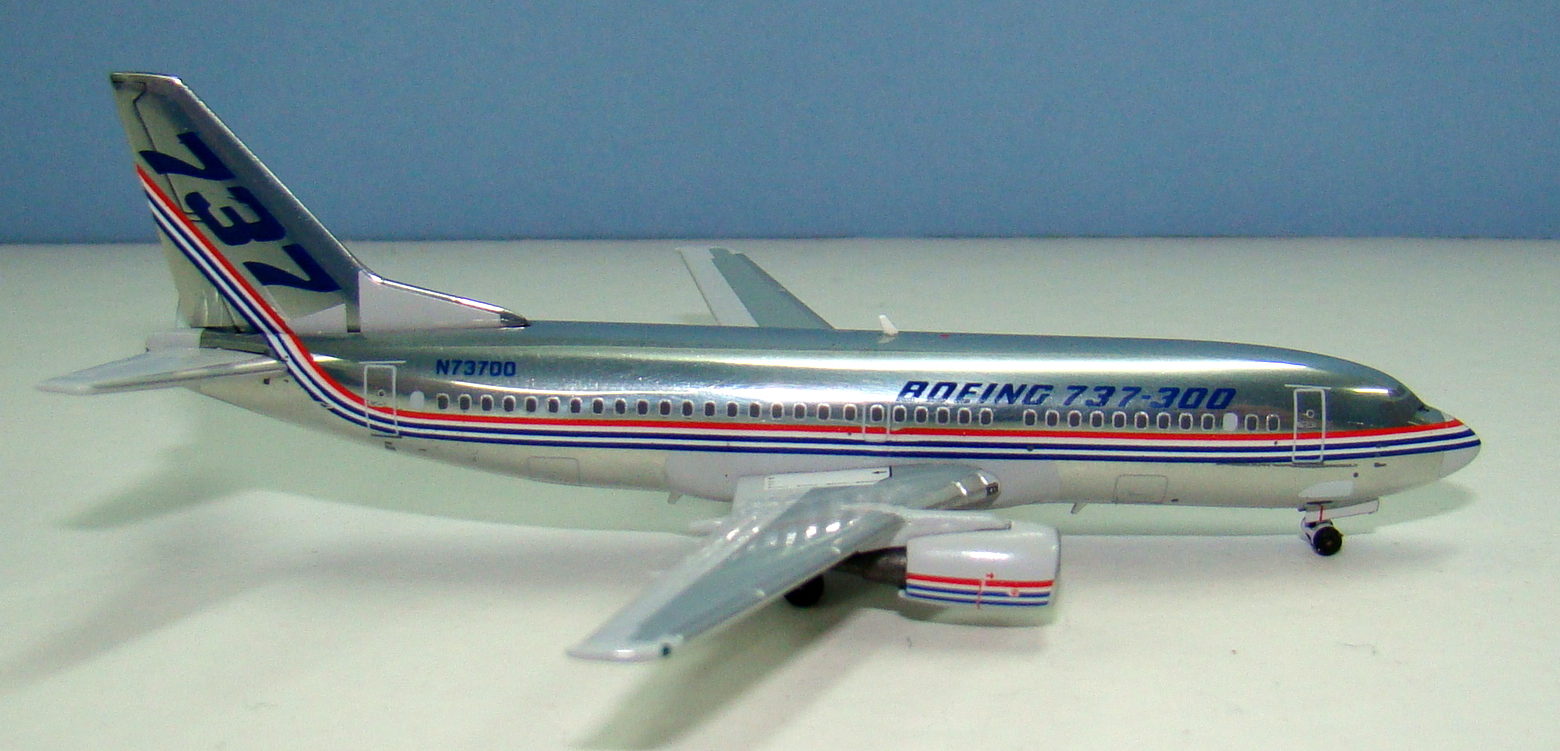


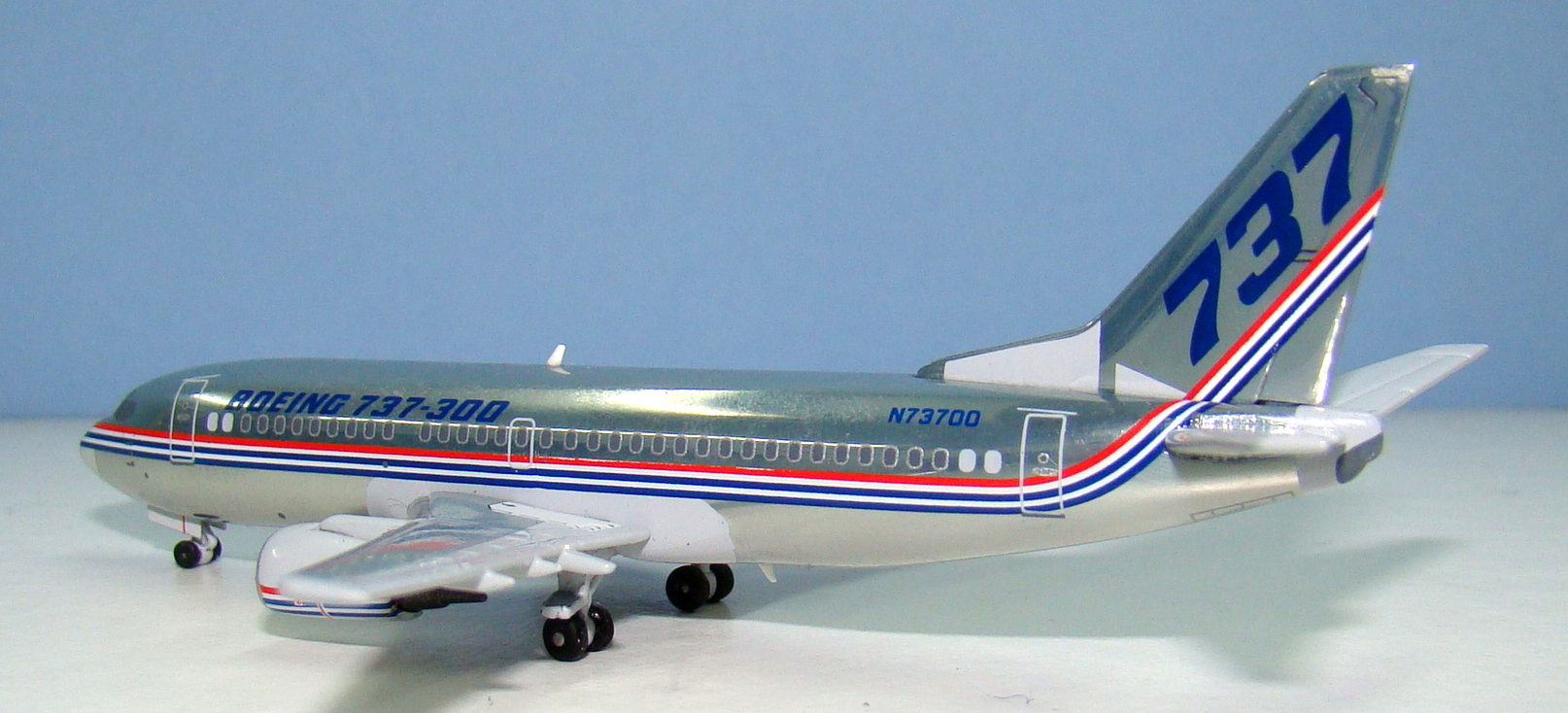
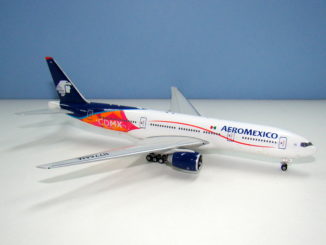

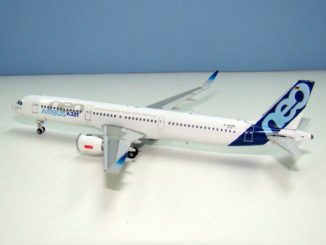
Good to see a house-colors 733 from the best mould out there. Hindsight of course is 20-20, but had Boeing given the 737-300 / 400 longer wings and longer range, the A320 might have had difficulty getting a foothold in North America. Boeing badly misjudged in marketing the 186-seat 757 as a replacement for the 150-seat 727-200. US carriers bought the 757 for routes that needed that aircraft’s larger capacity, but largely did not use it as a 727 replacement. Places like ROC that saw plentiful 727’s did not see 757’s because the aircraft was too big.
The 727-100-sized 737-300 could make near-transcon routes like PIT-LAX, but the 727-sized 737-400 could not. Thus, only USAir and Piedmont, who had a lot of high-density short-haul routes, ordered the 737-400 in the USA. Had the 737-400 had the range of say the 737-800, United might never have looked to Toulouse to replace its 727’s. But, as I said, hindsight is 20-20, and the market for transcon-range 125- and 150-seat aircraft may not have been visible on the horizon yet in the early 80’s when the 737 classics were designed.
Jim
Definitely one of my favorite aircraft and one of the best molds out there. Great stuff.
Alaska Airlines also bought a large fleet of 737-400’s in the USA, and per their website is phasing them all out by the end of 2017, replacing them with 737-900ER’s.
Jim